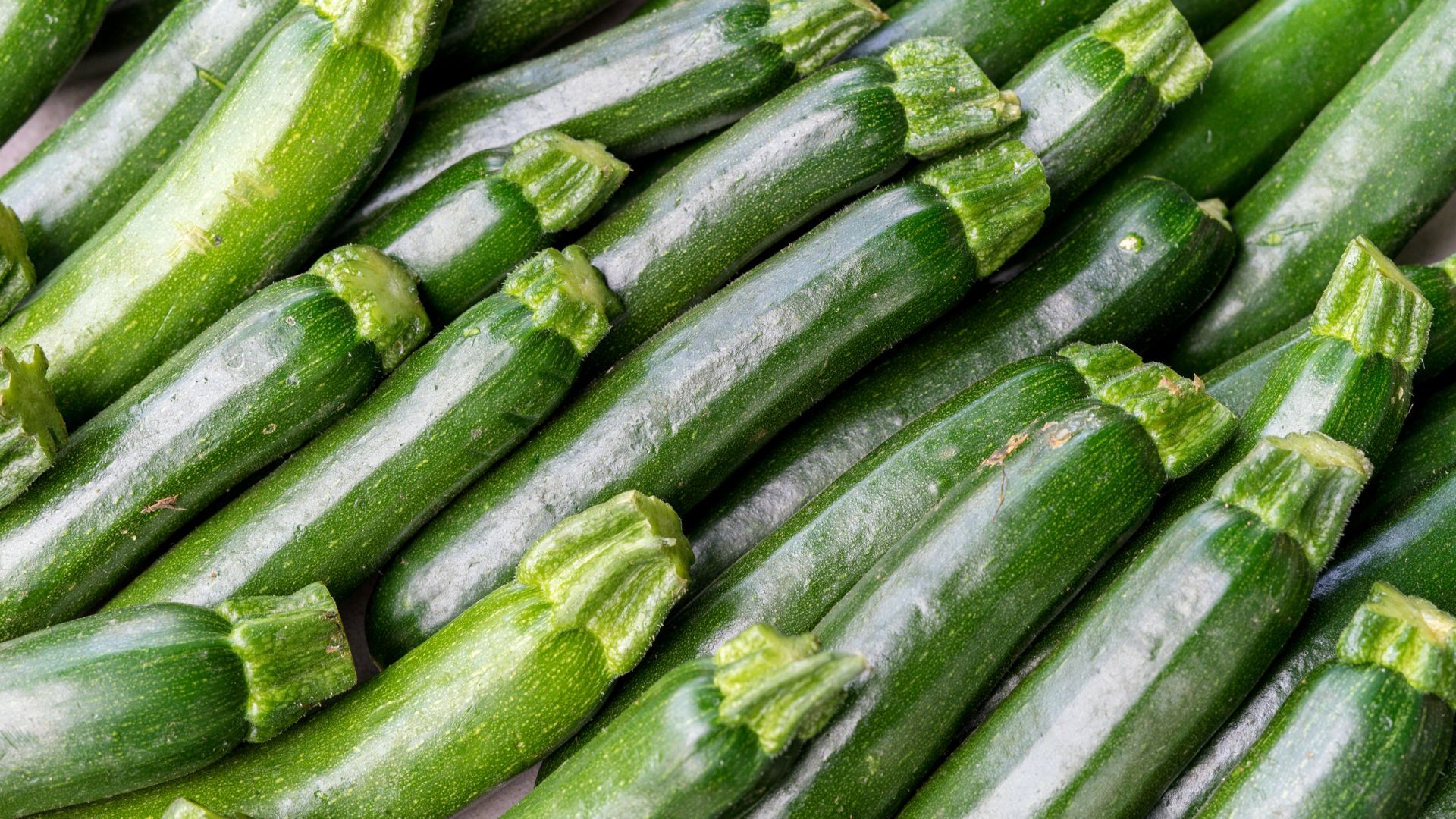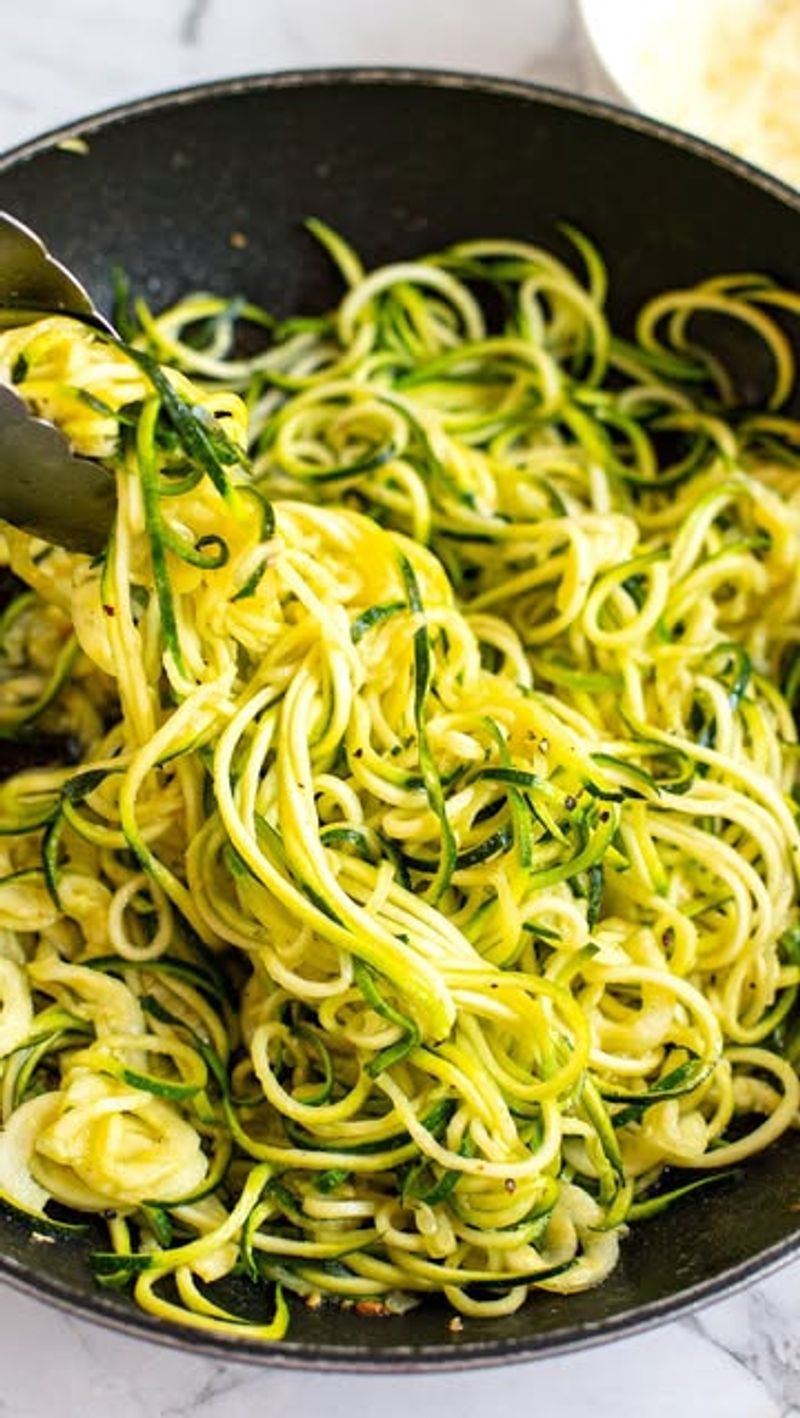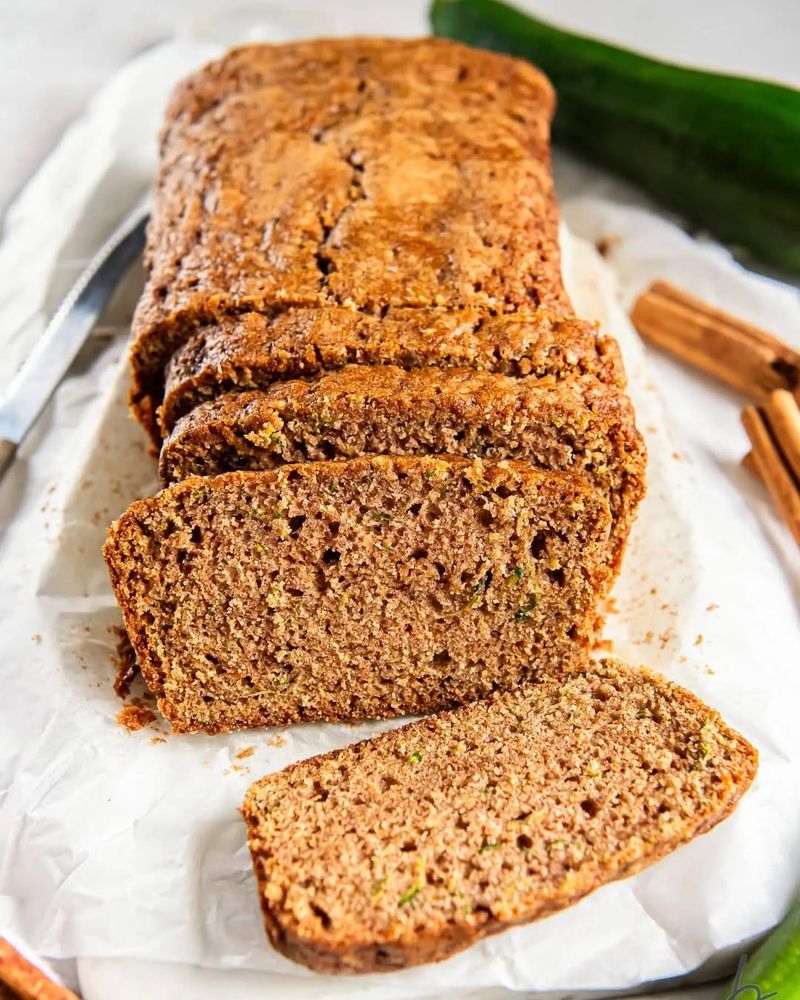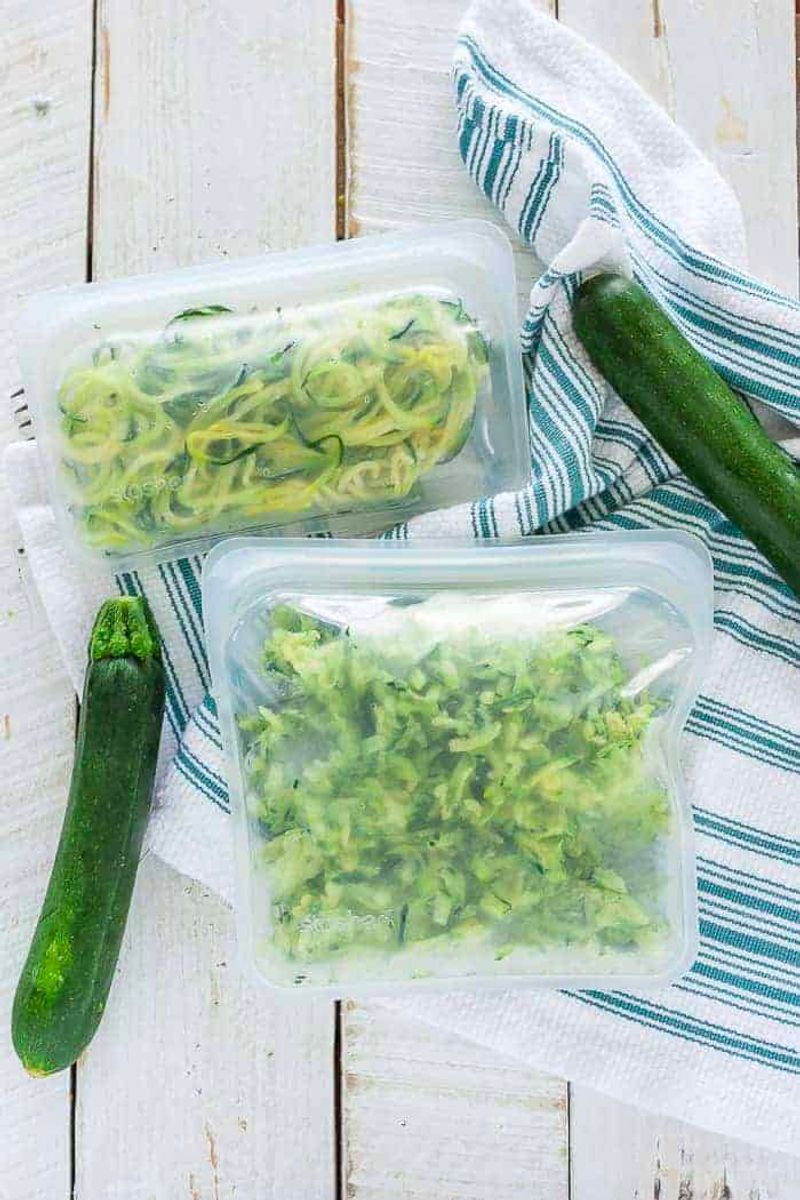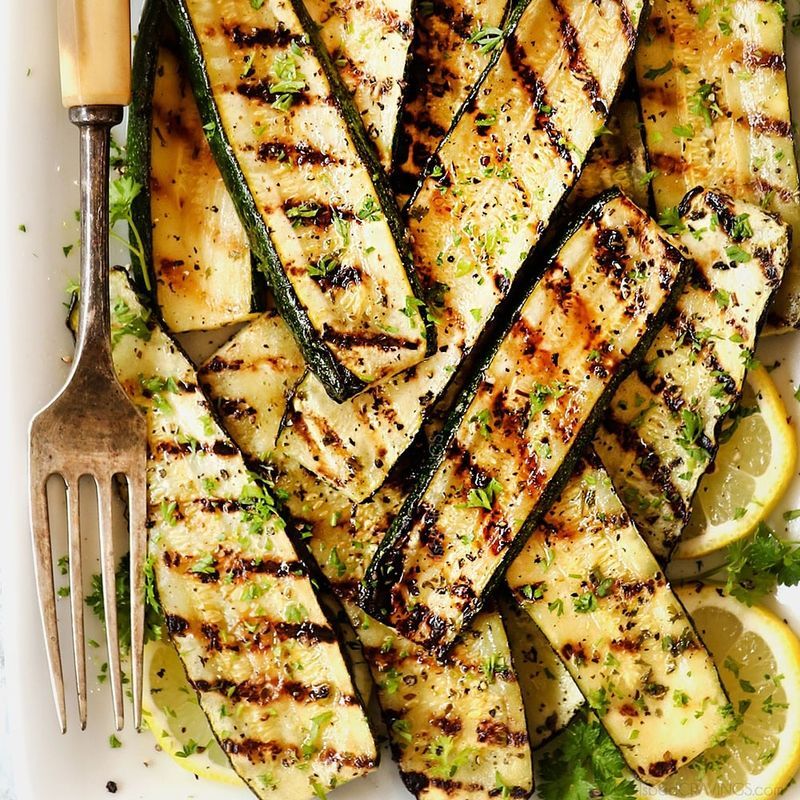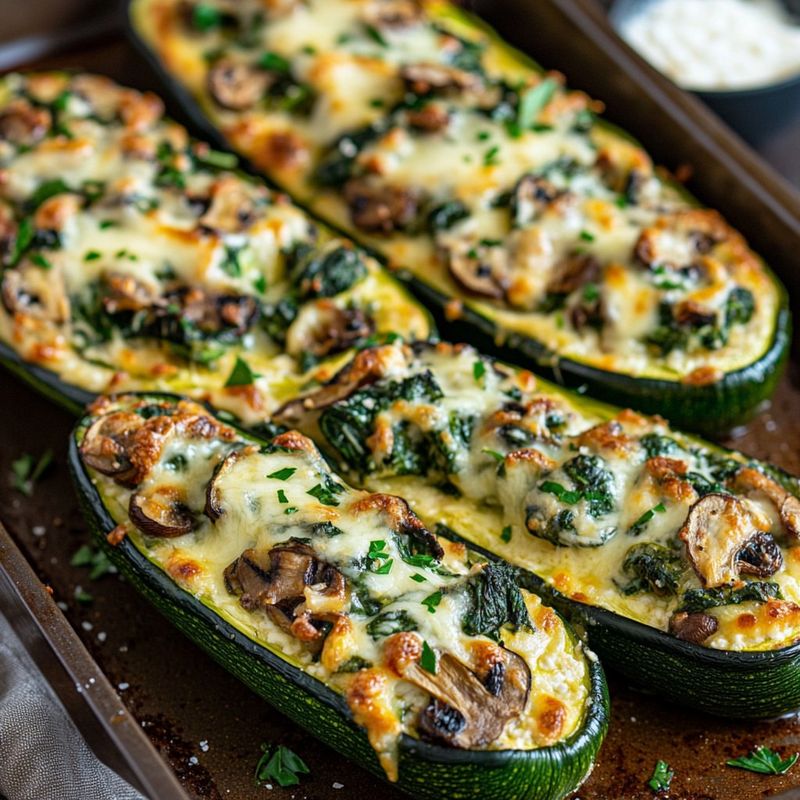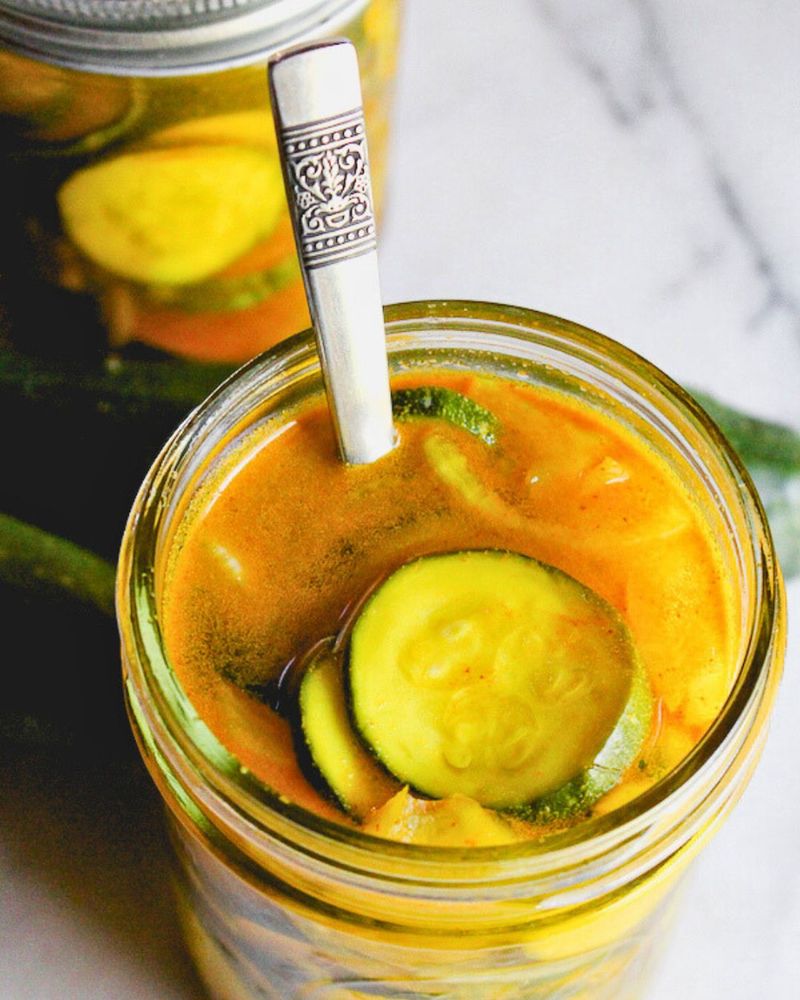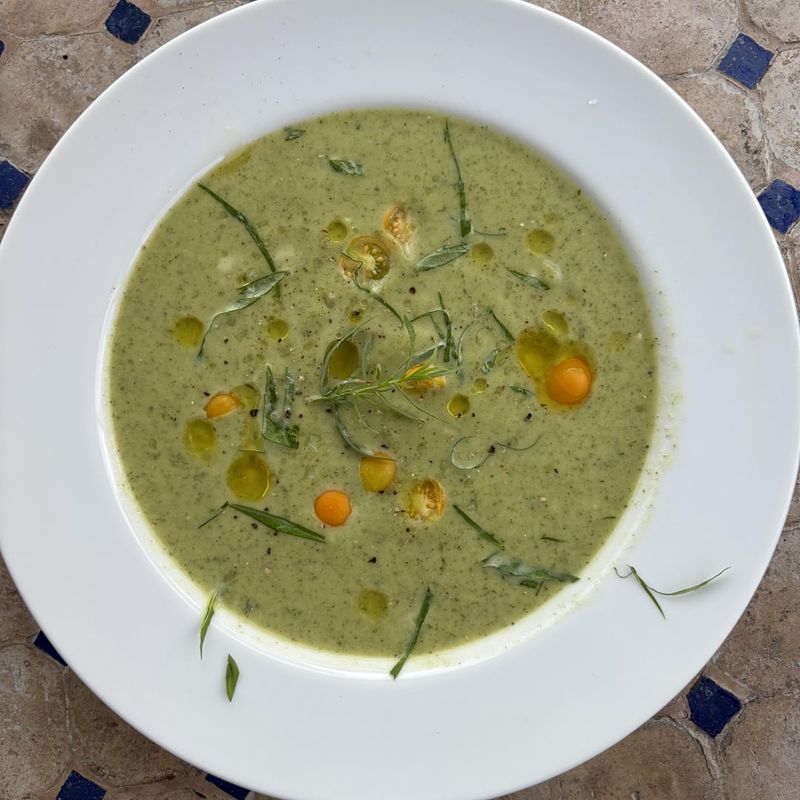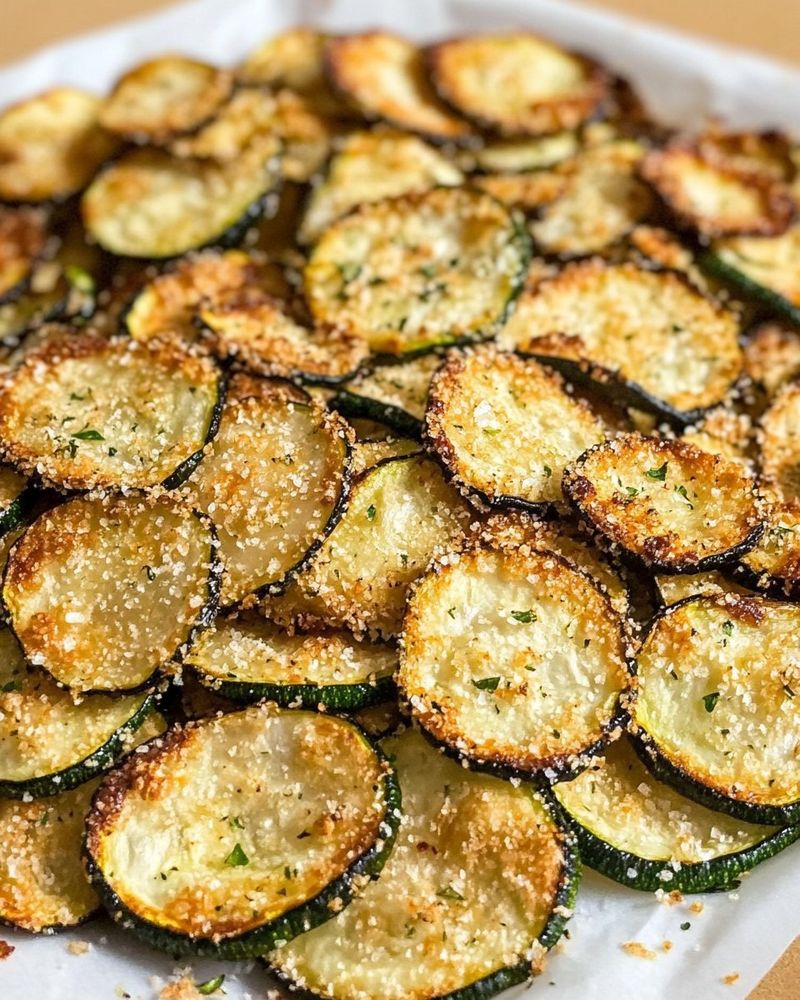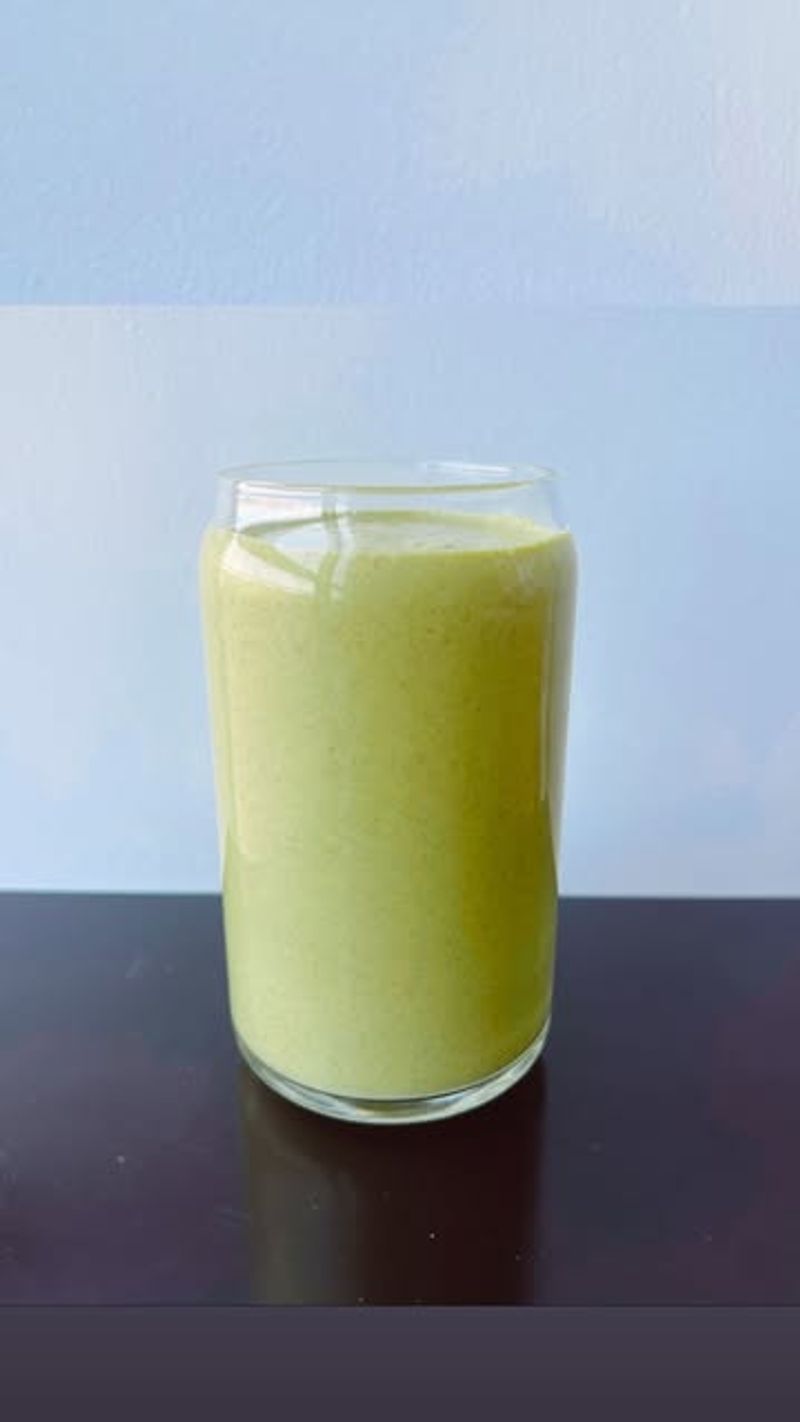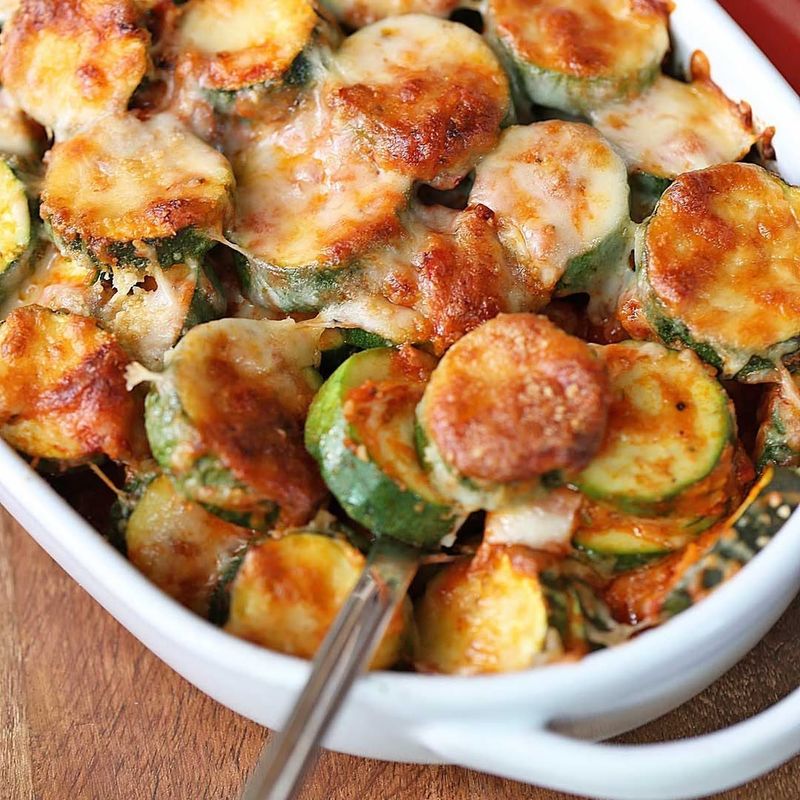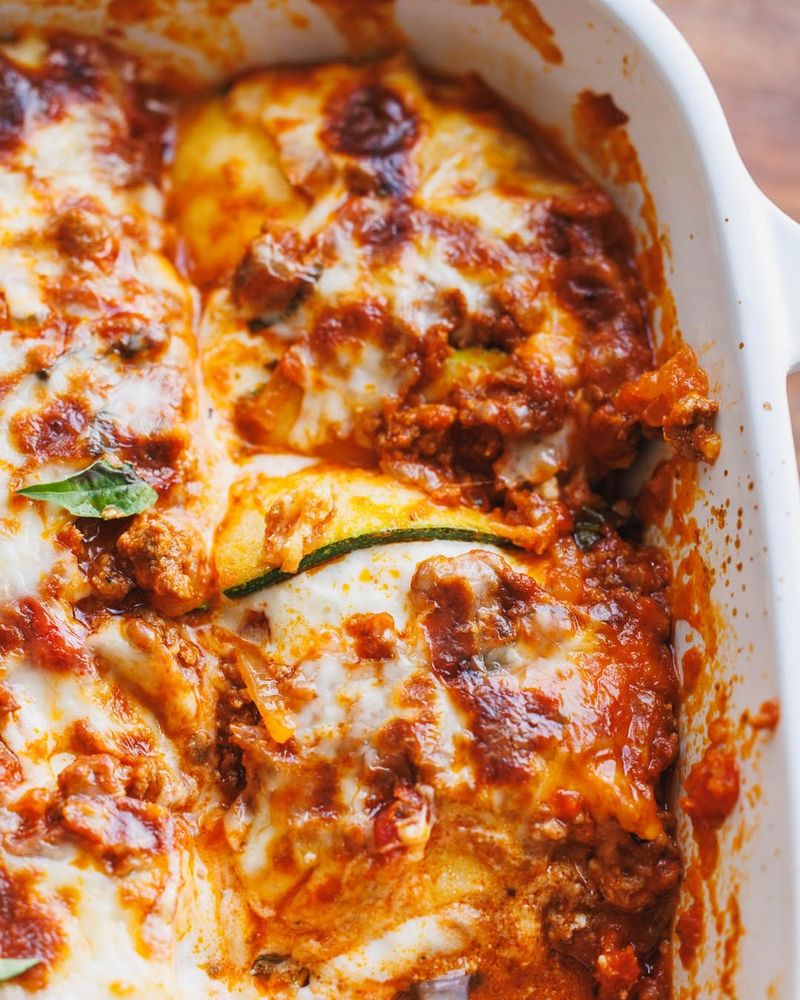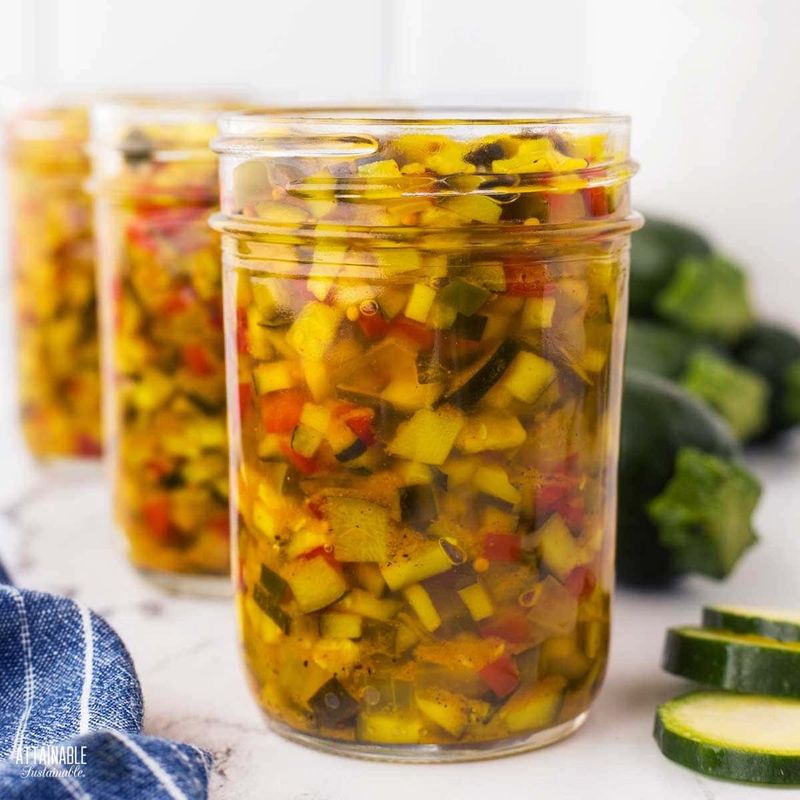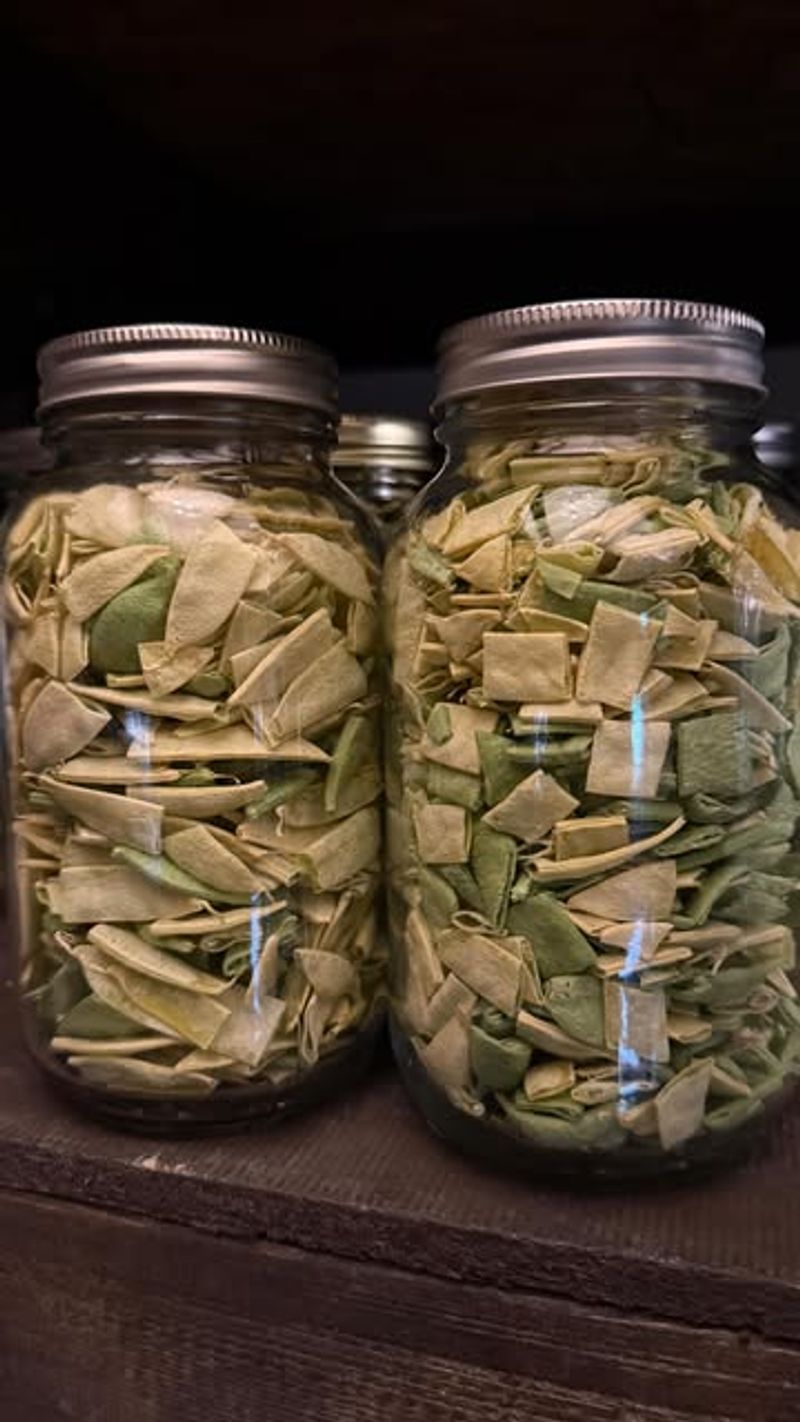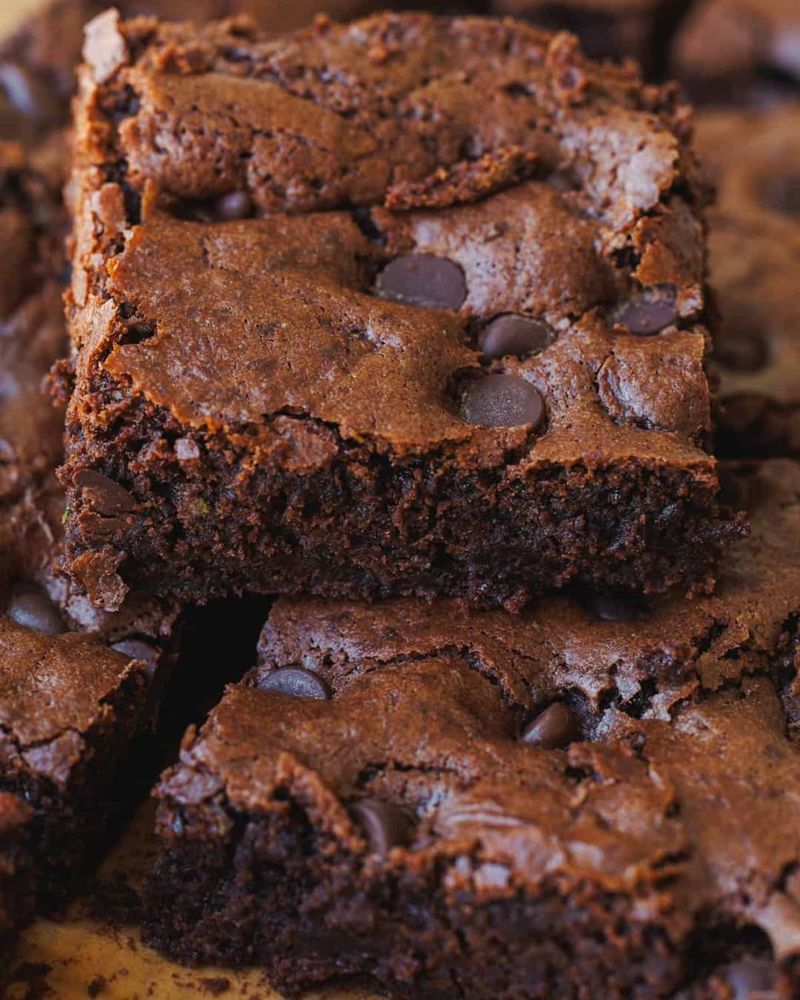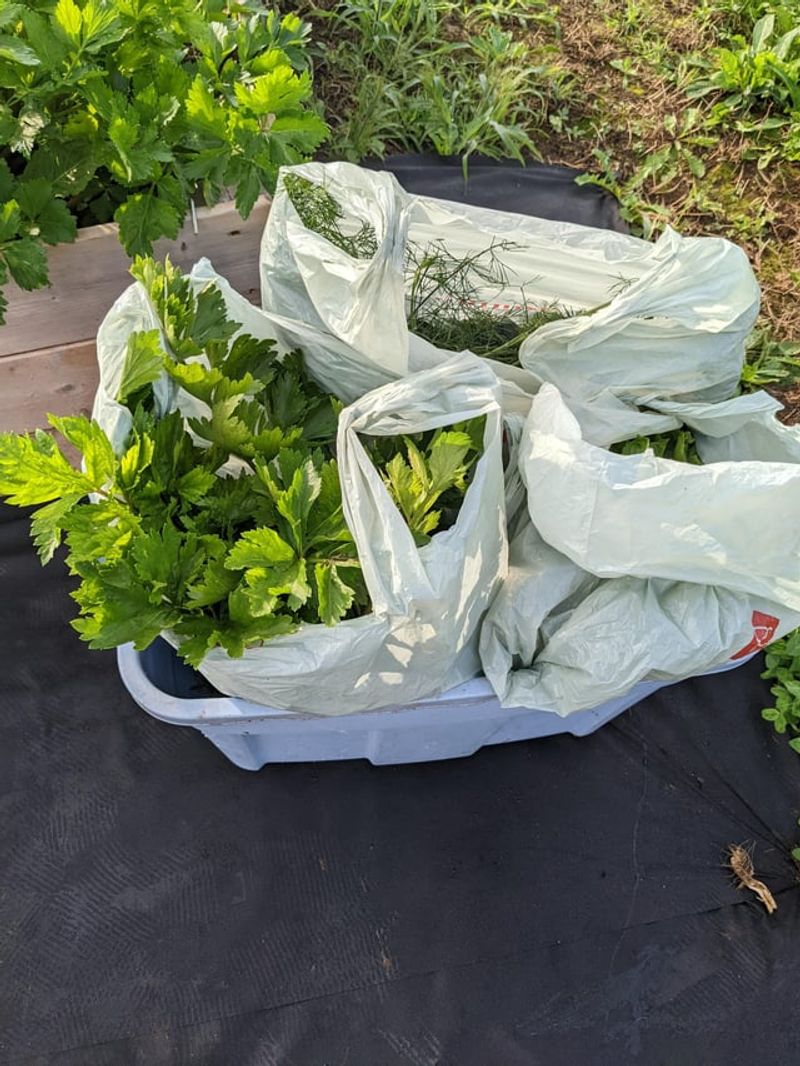If your garden suddenly looks like a zucchini factory, I totally get it—mine does the same every July. One day there’s nothing, and the next, you’ve got five giant squash that seemed to appear overnight. It’s a fun “problem,” but it can quickly become overwhelming.
At first, I tried the usual—grilling, baking, sneaking it into pasta—but there’s only so much zucchini bread one family can eat. That’s when I started getting creative with freezing, spiralizing, and even hiding it in chocolate cake (seriously, it works).
Now, I look forward to the zucchini rush because I’ve got a whole list of go-to recipes and storage tricks. If your counters are covered in green squash, don’t panic—there are plenty of ways to put that harvest to good use without boring your taste buds.
1. Spiralize Into Noodles
Transforming zucchini into noodles creates a low-carb pasta alternative that’s ready in minutes. All you need is a simple spiralizer or even a regular vegetable peeler to create long, thin strands.
The mild flavor pairs wonderfully with everything from marinara sauce to pesto. My family hardly notices the difference when I mix zucchini noodles with regular pasta, gradually increasing the veggie-to-pasta ratio.
These ‘zoodles’ cook much faster than regular pasta – just 2-3 minutes in a hot pan with a little olive oil does the trick. For a crunchier texture, eat them raw in summer salads.
2. Bake Zucchini Bread
Nothing beats the sweet, spiced aroma of zucchini bread baking in the oven. The grated vegetable adds incredible moisture while practically disappearing into the batter, making it perfect for picky eaters.
One large zucchini yields enough for two loaves – one to enjoy now and one to freeze for later. Add chocolate chips, nuts, or dried fruit to customize each batch differently.
The versatile batter works equally well for muffins, which bake faster and make portable snacks. Pro tip: squeeze excess moisture from grated zucchini before adding it to your batter for the perfect texture every time.
3. Freeze For Later Use
Summer’s bounty can become winter’s treasure with proper freezing techniques. Blanch sliced zucchini in boiling water for one minute, then plunge into ice water to preserve color and texture.
After draining thoroughly, arrange pieces on a parchment-lined baking sheet and freeze until solid. Transfer to freezer bags, removing as much air as possible before sealing.
For ultimate convenience, freeze shredded raw zucchini in measured portions for future baking projects. Measuring cups lined with plastic wrap make perfect portion molds – just freeze, unwrap, and store the zucchini discs in labeled bags for up to eight months.
4. Grill As A Side Dish
Summer grilling sessions call for easy vegetable sides, and zucchini answers perfectly. Slice them lengthwise into planks about ¼-inch thick for the ideal balance of char and tenderness.
A simple marinade of olive oil, lemon juice, garlic, and herbs transforms plain zucchini into a flavor-packed side. Let the slices marinate for just 15 minutes – any longer and they’ll release too much water.
The grill marks not only add smoky flavor but also make this humble vegetable look restaurant-worthy on your plate. Leftover grilled zucchini chops up beautifully for grain bowls or pasta salads the next day.
5. Make Crispy Fritters
Fritters turn humble zucchini into irresistible golden-brown bites that disappear as quickly as you can make them. Grate and salt the zucchini first, then squeeze out every drop of moisture – this crucial step ensures crispiness.
A simple batter of flour, egg, and seasonings binds everything together. Try adding corn, herbs, or feta cheese for delightful variations that keep this recipe interesting all summer long.
Serve fritters warm with a cooling dip like yogurt-dill sauce or tangy sour cream. They make perfect appetizers, sides, or even breakfast when topped with a fried egg and a dash of hot sauce.
6. Stuff With Savory Fillings
Large overgrown zucchini find their perfect purpose as edible vessels for delicious fillings. Cut them in half lengthwise, scoop out the seedy centers, and you’ve got natural boats ready for stuffing.
The filling possibilities are endless – try ground meat with tomatoes and cheese, or vegetarian versions with rice, beans, and roasted peppers. The hollowed-out flesh can be chopped and added back to your filling mixture to reduce waste.
These impressive-looking creations bake in about 25-30 minutes and often provide enough for leftovers. For quicker cooking, pre-steam the zucchini boats for 5 minutes before filling and baking.
7. Pickle For Tangy Treats
Pickled zucchini brings bright, tangy flavors to your summer table and preserves the harvest for months. Sliced into rounds or spears, the vegetable takes on whatever spices you pair it with – try dill and garlic for classic flavor or add red pepper flakes for heat.
Quick refrigerator pickles need just 24 hours to develop flavor and will keep for several weeks. The crisp texture and zingy taste make them perfect additions to sandwiches, burgers, and charcuterie boards.
For longer storage, properly canned zucchini pickles can last up to a year on the shelf. The pickling process transforms this mild vegetable into something surprisingly complex and addictive.
8. Blend Into Soups
Summer soups showcase zucchini’s versatility, whether served hot or chilled. The mild flavor creates a perfect base that takes on whatever seasonings you prefer – herbs, curry, or even fruit like apples work beautifully.
A simple preparation of sautéed onions, garlic, and chunks of zucchini simmered in broth creates magic when blended smooth. The natural starches give the soup a creamy texture without adding dairy.
Garnish with a swirl of yogurt, fresh herbs, or crunchy croutons for contrast. These soups freeze exceptionally well, letting you enjoy summer’s bounty months later when zucchini season is just a distant memory.
9. Create Veggie Chips
Turning zucchini into chips satisfies snack cravings while using up surprising amounts of this prolific vegetable. Sliced paper-thin with a mandoline, the rounds shrink dramatically during cooking, concentrating their flavor.
A light coating of olive oil and a sprinkle of salt is all you need, though additional seasonings like paprika, garlic powder, or nutritional yeast create exciting variations. Bake at a low temperature or use a dehydrator for the crispiest results.
Store cooled chips in an airtight container with a moisture-absorbing packet to maintain crunchiness. These wholesome snacks cost a fraction of store-bought veggie chips and contain no artificial ingredients or preservatives.
10. Shred Into Pancakes
Savory zucchini pancakes offer a quick solution to your vegetable surplus while making a satisfying meal. Grated zucchini forms the base, while a small amount of flour and egg creates the perfect binding agent.
These versatile pancakes welcome additional ingredients like corn, herbs, or cheese. They cook quickly in a hot skillet with just a little oil, developing golden-brown exteriors while staying tender inside.
Serve them as a light lunch topped with a dollop of Greek yogurt, as a side dish alongside grilled meats, or even as a base for poached eggs at breakfast. Kids particularly enjoy these when called “veggie fritters” instead of pancakes.
11. Add To Smoothies
Sneaking zucchini into smoothies might sound strange, but its mild flavor disappears completely while adding valuable nutrition and creamy texture. Peel and chop zucchini into chunks, then freeze on a tray before transferring to freezer bags.
Add a few frozen pieces to your regular fruit smoothie – they pair especially well with berries, banana, and a touch of honey. The vegetable’s high water content creates a refreshing drink without watering down the flavor.
One medium zucchini can disappear into two smoothies, making this a surprisingly effective way to use your harvest. Even the pickiest eaters won’t detect the hidden vegetable beneath the fruity flavors.
12. Bake Cheesy Casseroles
Casseroles transform abundant zucchini into comfort food that satisfies the whole family. Sliced or diced, this versatile vegetable layers beautifully with other ingredients like tomatoes, onions, and multiple cheeses.
The moisture from the zucchini steams the dish from within, creating tender layers that absorb surrounding flavors. A breadcrumb topping adds welcome texture contrast to the soft vegetables below.
These hearty dishes can serve as main courses or substantial sides. Make a double batch and freeze one before baking – future you will appreciate having a homemade dinner ready to go, especially when zucchini is no longer in season.
13. Craft Veggie Lasagna
Replacing pasta sheets with thin zucchini slices creates a lighter lasagna perfect for summer dining. Use a mandoline to get consistent, thin slices that will cook evenly throughout the dish.
The vegetable layers work beautifully with traditional lasagna components – ricotta mixture, marinara sauce, and mozzarella cheese. For best results, salt the zucchini slices and let them release excess moisture before building your lasagna.
This satisfying main dish uses several zucchini at once, making a significant dent in your harvest. Leftovers taste even better the next day as the flavors meld together, and portions freeze beautifully for future meals.
14. Make Sweet Relish
Transforming zucchini into sweet relish creates a condiment that brightens sandwiches, burgers, and hot dogs all year long. The small, uniform dice absorbs the flavors of vinegar, sugar, and spices while maintaining a pleasant texture.
Traditional recipes include bell peppers and onions for color and flavor complexity. The cooking process reduces the mixture to a thick, glossy consistency that perfectly complements savory foods.
Properly canned, this relish becomes shelf-stable for months, making it an excellent gift. The recipe typically uses large, overgrown zucchini that might otherwise go to waste – just remove the seedy centers before dicing.
15. Dehydrate For Long-Term Storage
Dehydrating zucchini dramatically reduces its volume while preserving nutrients and flavor for months. Uniform slices or small cubes dry most effectively, though you can also create zucchini “coins” with interesting visual appeal.
The dried pieces rehydrate beautifully in soups and stews during winter months. For snacking, try seasoning with herbs and spices before drying for zucchini “chips” with concentrated flavor.
A food dehydrator works best, but oven drying at very low temperatures also works well. Store fully dried pieces in airtight containers with oxygen absorbers for maximum shelf life – they’ll keep for up to a year when properly dried and stored.
16. Create Veggie-Based Desserts
Beyond zucchini bread, this versatile vegetable adds moisture and nutrition to many sweet treats. Chocolate zucchini cake hides the vegetable completely while gaining incredible texture from its natural moisture.
Zucchini brownies develop a fudgy consistency that keeps them fresh for days. The shredded vegetable practically disappears during baking, leaving behind only its beneficial properties.
Even cookies benefit from zucchini’s addition – oatmeal zucchini cookies with cinnamon and raisins taste like a treat while sneaking in vegetables. The natural sweetness intensifies during baking, allowing you to reduce added sugar in many recipes.
17. Donate To Food Banks
Local food banks and community kitchens often welcome fresh produce donations, especially during summer months when many families need nutritional support. Call ahead to confirm they accept garden vegetables and inquire about their preferred drop-off times.
Many gardeners find tremendous satisfaction in sharing their abundance with neighbors experiencing food insecurity. Some communities have organized programs specifically for garden surplus distribution.
Beyond food banks, consider senior centers, soup kitchens, or school programs that might benefit from fresh vegetables. Clean your zucchini thoroughly and select specimens without blemishes or damage for donation – giving your best produce shows respect for recipients.

